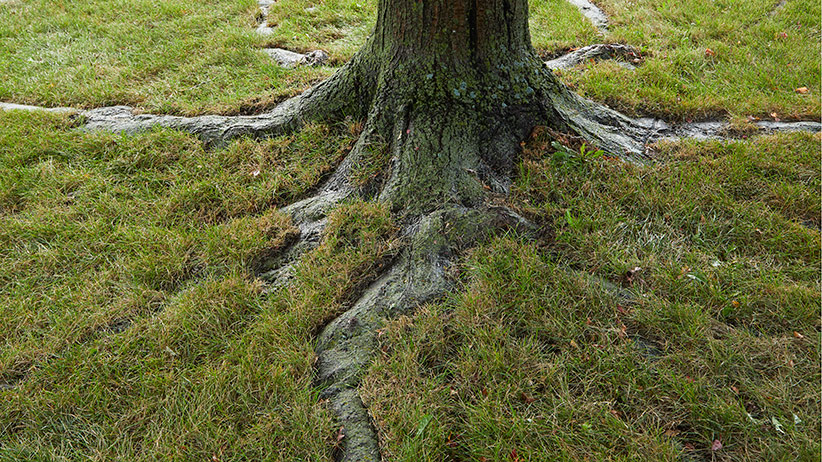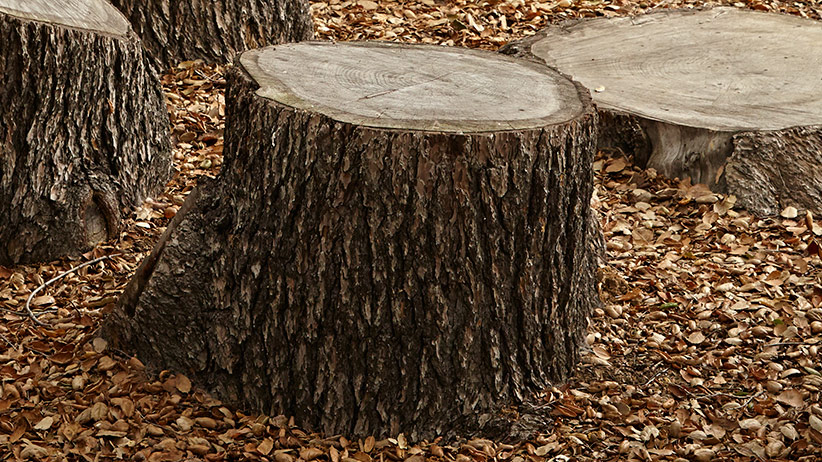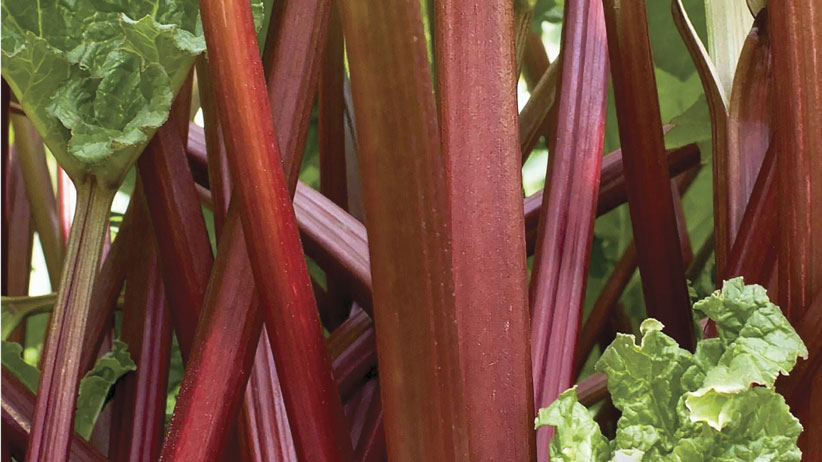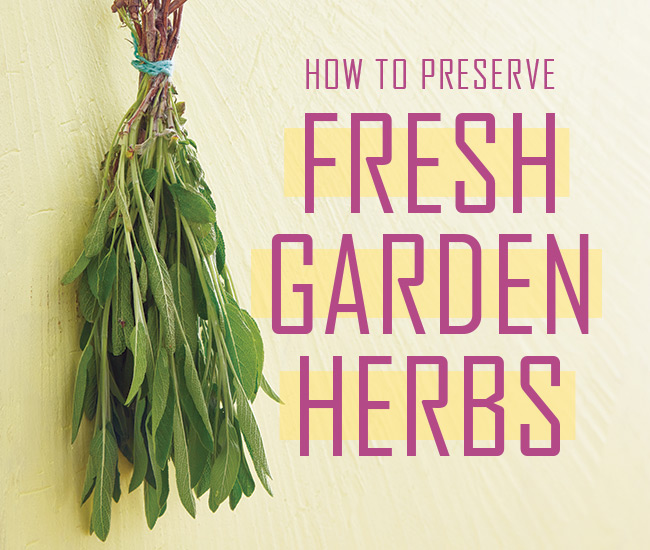
Enjoy fresh herbs from the garden longer by preserving them!
Instead of letting fresh herbs go to waste, preserve them. It’s a great way to enjoy your favorite herbs all year, and the process is a lot easier than you might think. In this article we'll share four simple preservation methods you can use from spring until the first frost hits, and I’ll show you which herbs work best for each approach.
How to harvest fresh herbs
The best time of day to harvest herbs, if you can, is in the morning after the dew has evaporated but before the heat has started to strip away plants’ natural essential oils. Plants with woodier stems will require a pair of pruners or scissors. Herbs with more tender stems can just be snapped off, no tool required.
Early harvests
During the growing season, harvest branching herbs like basil (Ocimum basilicum), oregano (Origanum vulgare) or mint (Mentha spp.) by cutting up to a third of a stem back to just above a leaf node. This encourages the plant to form new side shoots and continue to grow.
You can harvest nonbranching herbs, such as cilantro (Coriandrum sativum), parsley (Petroselinum crispum) or chives (Allium schoenoprasum), by cutting individual stems at the base. But don’t harvest all of them or they may not grow back. In general, try not to harvest more than a third of a plant at one time so plenty of leaves are left to photosynthesize.
Harvesting herbs in fall
For the last harvest of annual herbs in fall, go ahead and cut the entire plant to the ground, no matter which herb it is, as they won’t return the next year. It doesn’t hurt to harvest perennial herbs, such as rosemary, garden sage or thyme, lightly in fall, but do your larger harvests in spring and summer. If you cut them back heavily in fall, you could encourage them to send out tender new growth that’s susceptible to winter damage.
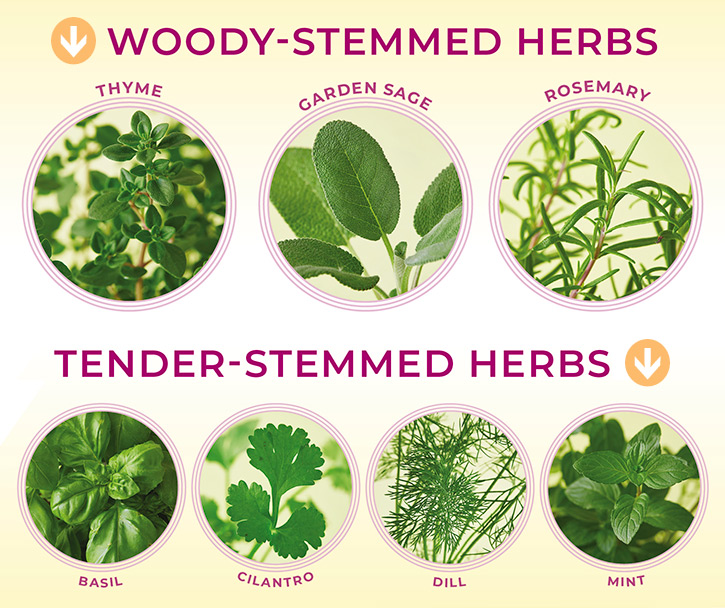
Tender vs. woody herbs
Tender-stemmed herbs have edible stems and leaves. Woody-stemmed herbs have edible leaves but their larger stems aren’t typically eaten. These tend to be shrubby and often more cold hardy so can be grown as perennials.
You Might Also Like:
5 Easy Herbs to Grow
Natural Housekeeping Ideas Using Garden Herbs
Ideas for Growing Herbs in Pots
How to prepare fresh herbs for preserving
Once you’ve gathered the herbs, give them a shake to dislodge insects, and snip off dead, dried or discolored leaves. Then wash stems and leaves thoroughly with cold water, pat the moisture off and set them out to dry on the counter or a drying rack (you could also use a salad spinner to speed up the process).
No matter which preserving method you use, it’s important that your herbs are completely dry before preserving, otherwise they could develop mold or surface bacteria later. Once the stems are dry to the touch, preserve them right away for the best flavor and color. Read on to learn about four different methods for preserving your fresh garden herbs.
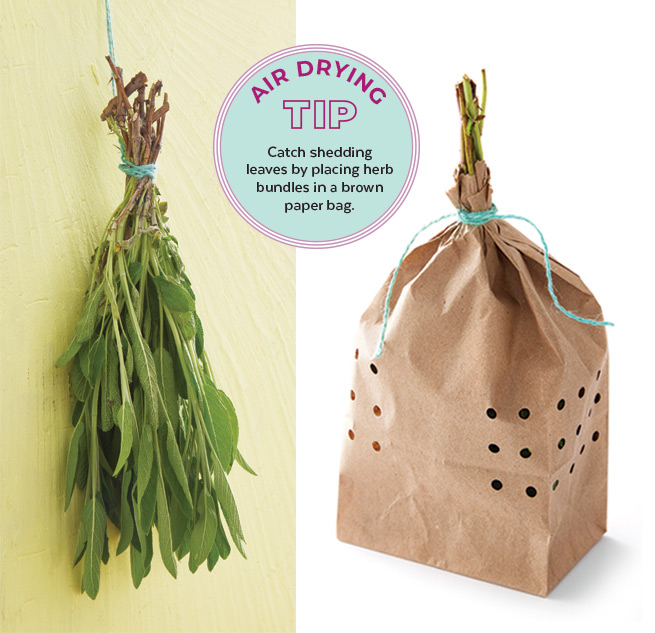
Preserve garden herbs by air drying
Because it’s a slower process, air drying preserves more of the oils and flavors than other methods. Plus, I love having herb bundles hanging around the house, and they smell great too. And all you need is a pair of scissors, rubber bands and twine.
Air-dry herb bundles upside down
Make small bundles of four to six stems for large-leafed herbs, such as sage (Salvia officinalis), mint or basil, and bundles of eight to 10 stems for smaller-leafed herbs, such as thyme (Thymus vulgaris), rosemary (Salvia rosmarinus) or lavender. If in doubt, go smaller — if you have too many stems bunched together, the herbs won’t dry evenly and could mold. Remove the bottom leaves from each stem, secure the stems together with a rubber band, then use the twine to hang them. Avoid placing the bundles in direct sunlight or they may lose their color and flavor; instead, hang them in a cool, dry, shady spot.
Air drying will take a few weeks. Dried herbs are ready to be stored when they crumble easily. Store them crushed or whole in labeled, sealed jars or bags for 2 to 3 years.
Air drying tip
If you want to avoid the mess of shedding leaves, try placing each herb bundle in a paper lunch bag and use a hole punch or scissors to make several holes on the bottom, sides and middle like you see above. This encourages airflow and helps prevent mold. I’ve found that drying tender-stemmed herbs that tend to have more moisture in their leaves, such as basil or mint, works best using a brown paper bag because the bag absorbs some of the moisture from the leaves.
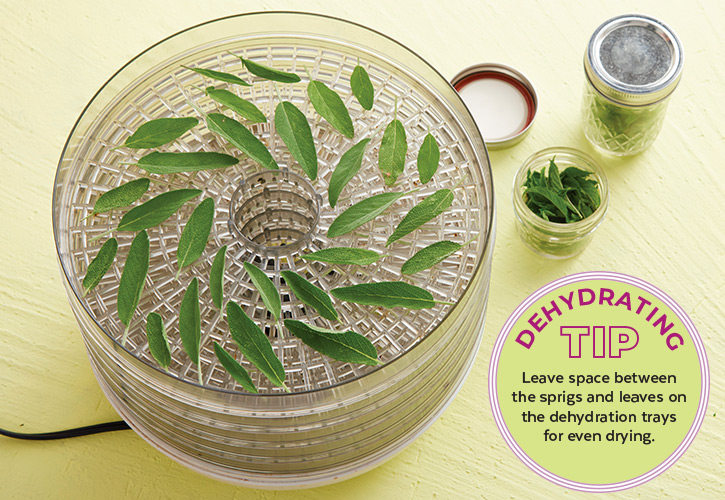
Dehydrate fresh herbs
Preserving herbs in a food dehydrator is faster than air drying, and although you can use an oven, it’s difficult to keep the temperature low enough and achieve enough airflow. Plus, the oils from the herbs won’t be as potent using an oven. Here are two better dehydration methods:
Use a dehydrator
Preheat the dehydrator to 95 to 115 degrees F (or on high-humidity days, 125 degrees F). Remove large leaves from stems and lay them flat on the trays for faster drying. Keep smaller leaves attached to the stems and lay them flat, leaving some space between each stem. Drying should take 1 to 4 hours. Check periodically and remove stems and leaves as they dry and are easily crumbled. Let them cool before storing.
Use an air fryer
Set your air fryer to dehydrator mode or the lowest temperature possible. Place your herb sprigs or leaves in the air-fryer for 1 to 3 hours and check them regularly. If leaves are not dehydrating uniformly and edges start browning, lower the temperature if you can. Once the herbs are dried, let them cool before storing.
You Might Also Like:
Watch Our Vegetable Garden Videos on YouTube
How to Grow Basil
Vegetable Garden Planting Plan
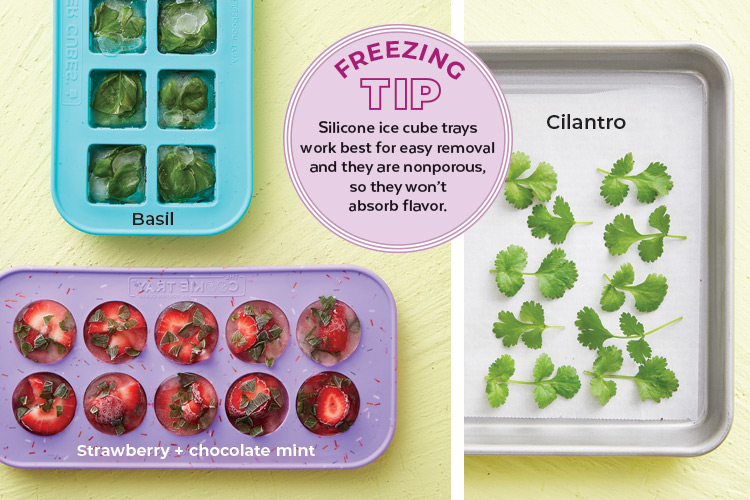
Freeze garden herbs to use later
Another easy way to preserve fresh herbs is to store them in the freezer for up to a year.
Use an ice cube tray
Fill an ice cube tray with fresh herb leaves and cover them with water or olive oil, then freeze them. Or make pesto cubes for later use. Once they are frozen, transfer the ice cubes to a resealable freezer bag. This method makes it easy to add herbs to recipes. You can also get creative and mix different fruit and herbs together, and add them to your water, lemonades or cocktails. Silicone ice cube trays work best for easy removal and they are nonporous so they won't absorb flavor. The Souper cube silicone trays seen above worked perfect!
Freeze herbs on a baking sheet
Lay your fresh herb leaves or stems on a baking sheet or parchment paper and place them in the freezer overnight. Once the herbs are completely frozen, place them in a sealable container or freezer bag and put them back in the freezer until you need to use them. This method keeps herbs fresh for 2 to 3 months.
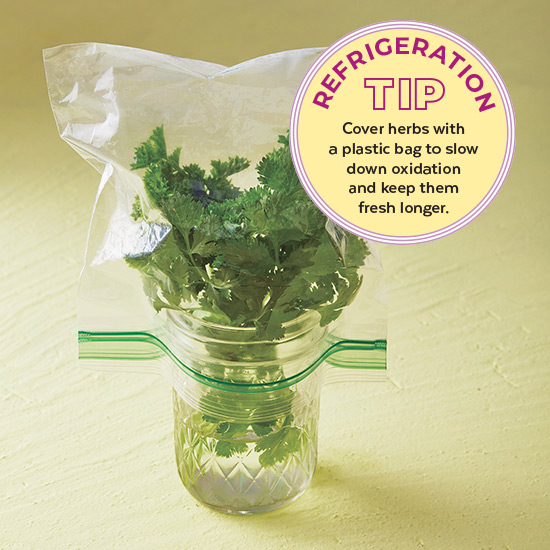
Preserve fresh herbs in the refrigerator
If you’re going to use garden herbs in a few days to a few weeks, refrigerating them is the way to go!
Fill a resealable plastic bag
After you’ve cleaned and dried your woody herbs, such as rosemary, thyme, oregano or garden sage, wrap the cuttings — stems and all — in a damp paper towel, put them in a resealable plastic bag and place it in the refrigerator — this will keep them fresh for two to three weeks.
Place tender herb stems in a jar
After rinsing and drying tender-stemmed herbs, such as basil, cilantro, parsley, mint, dill (Anethum graveolens) and chives, place the stems upright in a jar and add an inch or two of water to the bottom. Then cover it with a plastic bag before storing it in the fridge. If you remember to replace the water daily, you can expect this method to preserve your fresh herbs for one to two weeks.
Once you’ve mastered these basic preservation methods, experiment with herbal blends, make vinegar, oil and butter infusions…the possibilities are endless (and delicious!).









